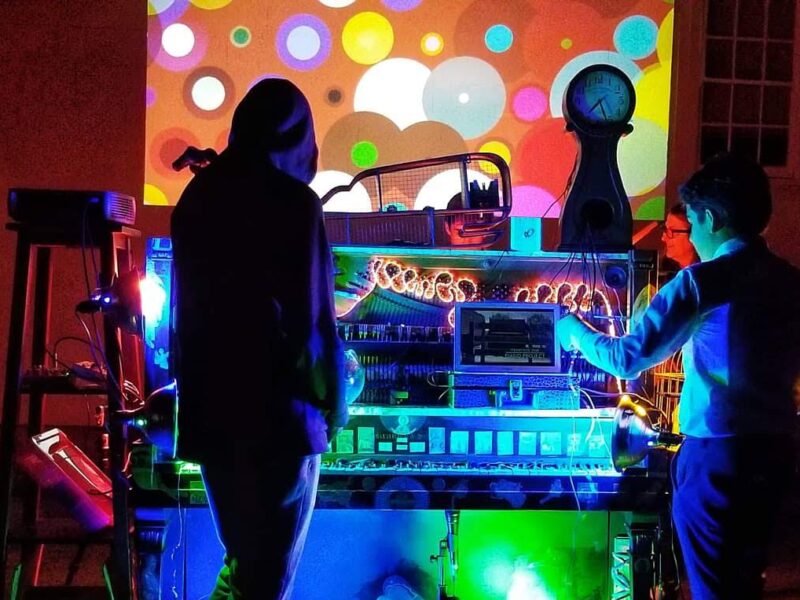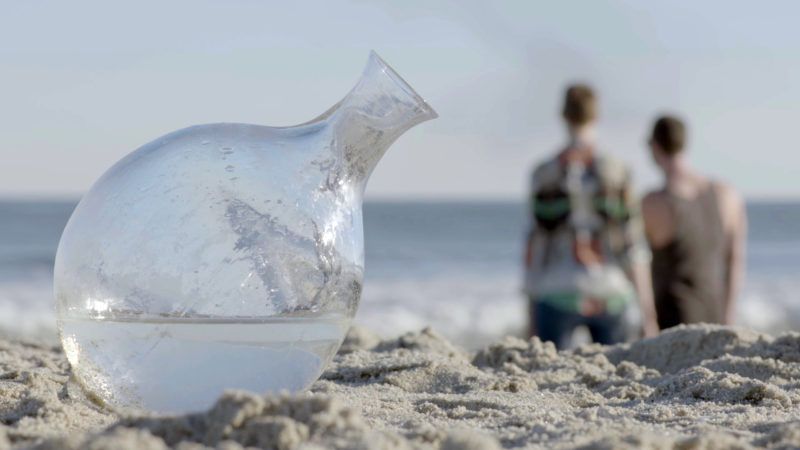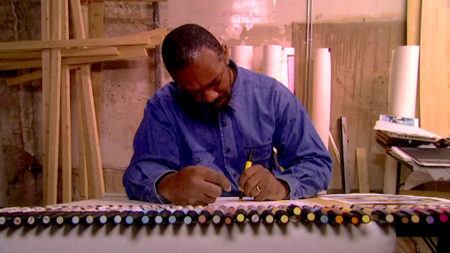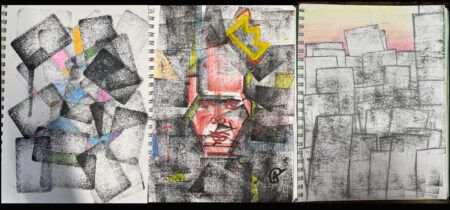Teaching with Contemporary Art
The Alchemy of Extending Classroom Art Projects

Courtesy of Steven Speciale.
I think of my class projects as guided-meditations for my students. I want learners to be contemplative about the topics studied and the work created. I want to cultivate resilient learners that strive to improve. Sometimes, teaching interdisciplinarily competes for time with the repetition needed to acquire and refine art-making skills. I have cultivated a project design philosophy around the concept of transmutation to reconcile these somewhat disparate aims.
Alchemy is centered around transmutation: changing material from one form into another. In this case, instead of turning lead into gold, the artistic product of a curricular unit becomes the base material transformed by the next lesson. An example of this kind of throughline was my yearlong Piano Project with the guiding question: What is a piano?
Piano Project Summary, video by Steven Speciale.
I found a free piano on Craigslist and dragged it to my classroom. We documented the instrument with photos and made an audio recording of each note on the keyboard.
We staged a happening in the classroom with a collaborative performance of the Fluxus composition “Piano Piece #13” by George Maciunas where students took turns nailing down all the keys of the piano.
After contemplating the “dead” piano, students made and decoupaged their own surrealist collage all over the case, resurrecting the dead instrument as a sculpture.

Courtesy of Steven Speciale.
Students composed surrealist musique concrete compositions in GarageBand from the original recordings of the single notes. Because the piano keys were all nailed down, its strings were undamped. We broadcast the compositions into the piano case so the strings resonated sympathetically from the sounds of its own notes, literally playing the piano again. We projected sonically-reactive visuals onto the case during playback and filmed the results.
We collaboratively re-designed the piano into an instrument that could be played by anyone. Learners bricolage percussive sculptures all over the piano that could be struck by solenoids. Through a computer, we could program beats. We strung copper wire between all the nails in the keys creating a large capacitive circuit that when connected to software, players could control synthesized sounds by varying their finger-pressure on the nails.

Artist Caroline Woolard’s collaborative project with Helen Lee & Alex Rosenberg, Carried On Both Sides. Production still from the Art21 digital series, New York Close Up. © Art21, Inc. 2017.
Key elements to transmutative project success include lots of post-mortem discussion after each creative step and student choice in the individual project piece and design. Art21 videos are invaluable as models of how to think artistically, that is, how to transmute one’s idea about a topic into art. Specifically we watched Caroline Woolard discuss her amphoras. Woolard serendipitously discovered that the ‘@’ symbol, so ubiquitous in email addresses and social media, was originally a symbol for the ancient amphora itself. Through her research, Woolard is able to meld ancient and modern ideas and symbols into objects laden with contemporary metaphor. Similarly, I like to show the films where Jennifer Allora and Guillermo Calzadilla root their art in curiosity and research, then collaborate with each other and others to make the work.
With the tacit permission of these artist examples, I collaborate with my students about each subsequent phase of the project. We generate ideas and use the product of a project step to either continue an idea or take a sharp turn towards another field of interest.
Ultimately, transmuting projects strives to empower students with choice, cultivate resilience, destigmatize failure, and encourage curiosity.



